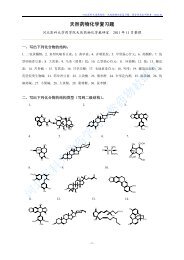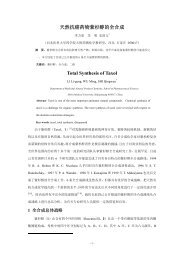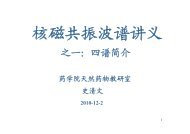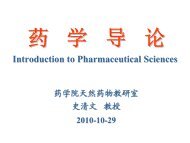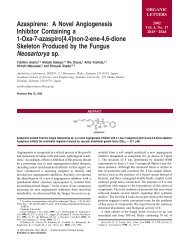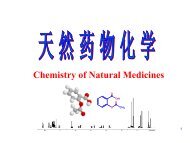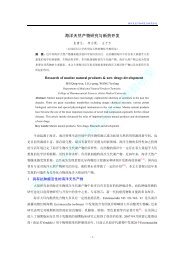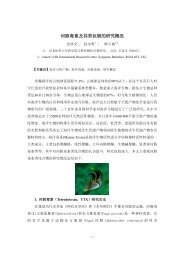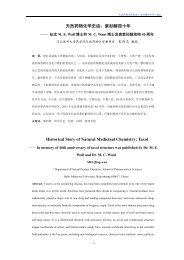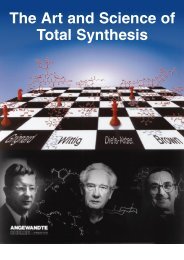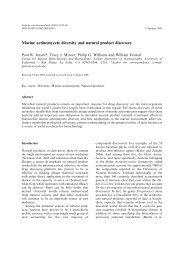Total Synthesis Highlights
Total Synthesis Highlights
Total Synthesis Highlights
Create successful ePaper yourself
Turn your PDF publications into a flip-book with our unique Google optimized e-Paper software.
83. <strong>Synthesis</strong> of (+)-Phomactin A<br />
The diterpene (+)-Phomactin A 4 is an antagonist of platelet activating factor. The preparation of 4<br />
recently reported (J. Am. Chem. Soc. 2003, 125, 1712.) by Randall Halcomb of the University of<br />
Colorado elegantly illustrates the use of readily-available natural products as starting materials for<br />
natural product synthesis.<br />
The synthetic plan called for a late-stage intramolecular reductive coupling of the iododiene 3 to<br />
establish the macrocyclic ring of 4. The iododiene 3 was to be assembled by condensation of the<br />
highly-substituted cyclohexene 1 with the aldehyde 2.<br />
The aldehyde 2 was prepared from the inexpensive geraniol ether 5. Selective ozonolysis followed<br />
by Wittig homologation gave the bromodiene, which was converted via dehydrobromination and<br />
alkylation to the alkyne 6. Regioselective hydridozirconation followed by iodination of the C-Zr<br />
bond gave the alkenyl iodide 7 with high geometric control. The two stereogenic centers of 2 were<br />
then established by Sharpless asymmetric epoxidation.<br />
The preparation of the cyclohexene 1 began with pulegone 8, available commercially in high<br />
enantiomeric purity. Methylation followed by retro aldol condensation to remove the unwanted<br />
isopropylidene group gave 2,3-dimethylcyclohexanone, which on<br />
bromination-dehydrobromination gave 9. Vinylation followed by alkylative enone transposition



